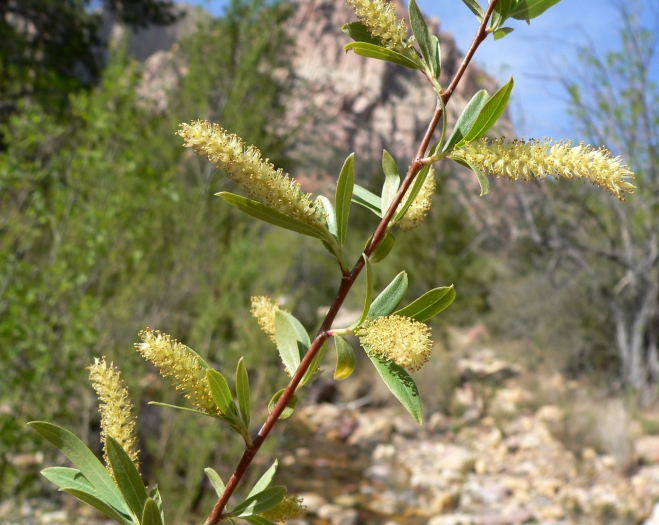Goodding’s Willow
(Salix gooddingii)
Goodding’s Willow (Salix gooddingii)
/
/

Stan Shebs
CC BY-SA 3.0



















































Estimated Native Range
Summary
Goodding’s Willow is valued for its ability to stabilize stream banks and for its wildlife habitat benefits, supporting a variety of birds and insects. It is used in restoration projects, as well as in naturalistic garden settings. This tree thrives in full sun and requires high amounts of water, making it suitable for wet areas in the landscape. It adapts to a range of soil types, provided they have fast or medium drainage. While it is not commonly afflicted by diseases, it can be susceptible to willow beetle infestations. Due to its extensive root system, it should be planted away from septic systems and structures to avoid potential damage.CC BY-SA 4.0
Plant Description
- Plant Type: Tree
- Height: 20-40 feet
- Width: 15-35 feet
- Growth Rate: Rapid
- Flower Color: N/A
- Flowering Season: Spring
- Leaf Retention: Deciduous
Growth Requirements
- Sun: Full Sun
- Water: High, Medium
- Drainage: Fast, Medium
Common Uses
Bee Garden, Bird Garden, Butterfly Garden, Deer Resistant, Edible*Disclaimer: Easyscape's listed plant edibility is for informational use. Always verify the safety and proper identification of any plant before consumption., Erosion Control, Fire Resistant, Low Maintenance, Water Garden
Natural Habitat
Riparian zones, wetlands, and occasionally adjacent woodlands and desert oases
Other Names
Common Names: Goodding’s Black Willow, Dudley Willow, Gooding Black Willow, Western Black Willow, Valley Willow
Scientific Names: , Salix gooddingii, Salix gooddingii var. vallicola, Salix gooddingii var. variabilis, Salix nigra var. vallicola, Salix gooddingii var. gooddingii, Salix vallicola, Pleiarina gooddingii, Salix gooddingii subsp. vallicola,
GBIF Accepted Name: Salix gooddingii C.R.Ball